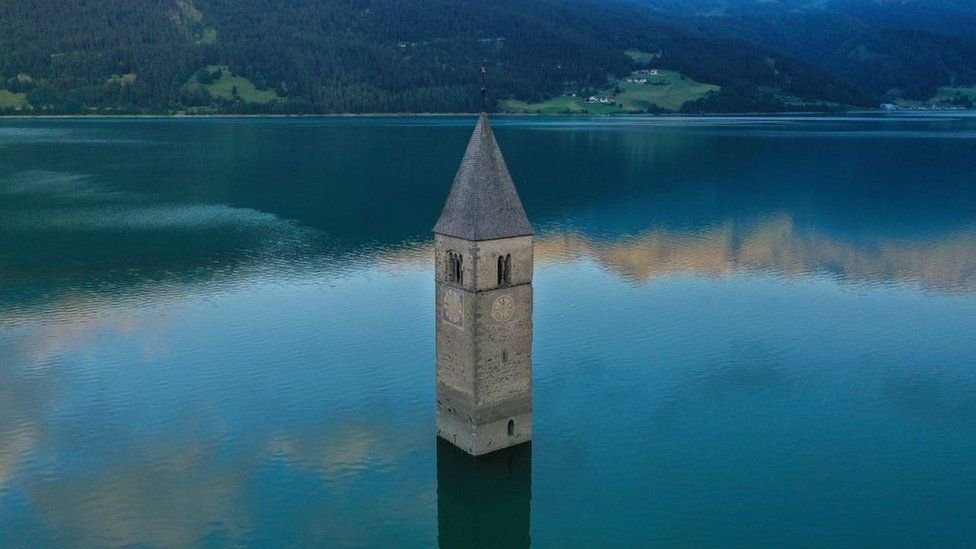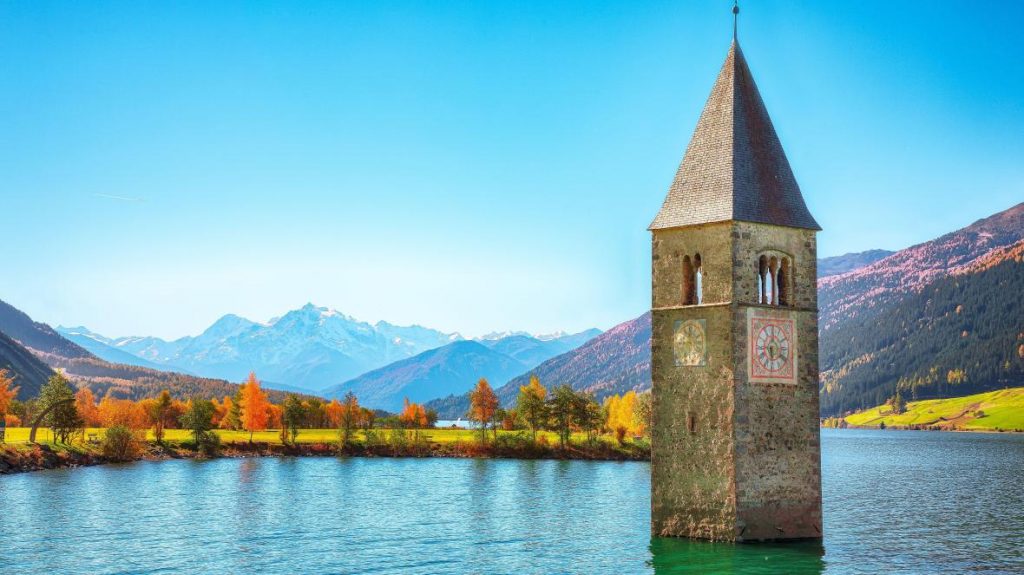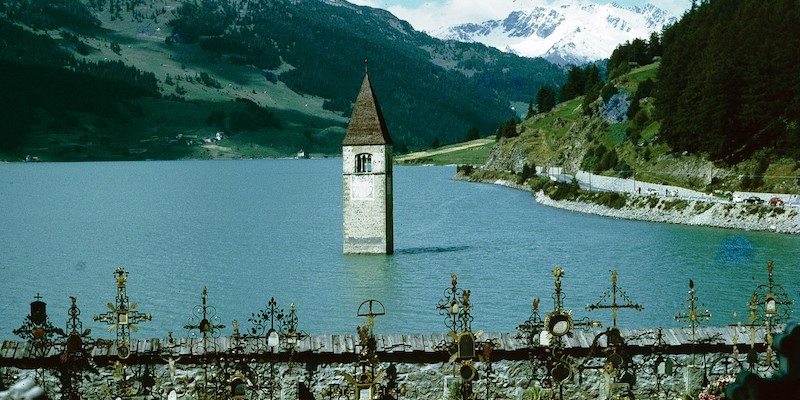Repair works at a reservoir in Italy have revealed the remains of a village that had been submerged for decades.
BBC – Lake Resia, in the north of the country, is best known for the church steeple emerging from its icy waters. The iconic scene has even inspired a book and a Netflix series. But with the lake temporarily drained, locals have been able to see the final traces of Curon, a village once home to hundreds before it was flooded to create a hydroelectric plant in 1950.

A village under water for decades is now emerging from an Italian lake
CBCNews – A village submerged beneath an Italian lake for decades, like a real-life Atlantis, is now peeking above the water’s surface, BBC News reports. What is now a lake bed used to be the village of Curon, once home to hundreds of people. Curon was flooded in 1950 to create a hydroelectric plant. A dam was built to merge two lakes, and the village has been covered by the Lake Resia ever since, according to BBC News.
Village resurfaces after 70 years under water
The Times – The draining of an artificial lake in South Tyrol has exposed the remains of a village that was sacrificed 70 years ago in order to provide hydroelectric power for the industries of northern Italy. The village of Curon inspired a novel and a Netflix series and is best known for its 14th-century church tower that rises eerily from Lake Resia. The village was at the confluence of two natural lakes and was flooded in 1950, allowing the power station at Glorenza to generate 250 million kWh a year.

Curon, il livello d’acqua si abbassa e riaffiora il paese sommerso in Alto Adige: le immagini spettacolari – Video
IlFattoQuotidiano – Il livello dell’acqua è stato abbassato e sono così riaffiorati i resti del paese sommerso nel 1950. Il lago è conosciuto da tempo per il campanile che, isolato tra le gelide acque del Lago di Resia, fa capolino. Negli ultimi anni è diventato famoso nel mondo per il romanzo Resto qui di Marco Balzano e per la fortunata serie Netflix Curon. Tra il 1949-50 la Montedison ha creato il bacino artificiale del Lago di Resia per la produzione di energia elettrica. Per la realizzazione della mega opera il vecchio paese di Curon con le sue 163 case fu allagato. L’unico edificio rimasto in piedi è il campanile della chiesa di Sant’Anna.
La storia di Curon, il paese sommerso
Il Post – Nel 1950 la costruzione della diga di Resia comportò la distruzione di un piccolo paese sudtirolese: rimase in piedi soltanto il suo antico campanile, che da allora spunta dalle acque.
La prossima serie televisiva italiana prodotta da Netflix sarà ambientata nel paese di Curon in Venosta, uno degli ultimi centri abitati italiani nel Sud Tirolo prima del confine austriaco. Curon – in tedesco Graun – conta poco più di duemila abitanti, al 97 per cento di madrelingua tedesca secondo un censimento condotto nel 2011 dalla provincia di Bolzano. Il paese è famoso principalmente per trovarsi lungo la via Claudia Augusta e per il suo antico campanile che spunta dalle acque del lago artificiale di Resia. Il campanile è l’unico edificio rimasto in piedi del vecchio centro abitato, sommerso interamente – e volutamente – dalle acque del lago negli anni Cinquanta.

Drained lake reveals remnants of lost Italian village
CVNews – The eerie image of a church bell tower emerging from Lake Resia in northern Italy became so famous it inspired a book and a Netflix series. Now the remains of the surrounding village, which has been under water for more than 70 years, have been revealed again. The village of Curon once had some 900 inhabitants living in 160 homes, but it was flooded in 1950 to create a hydroelectric plant.


